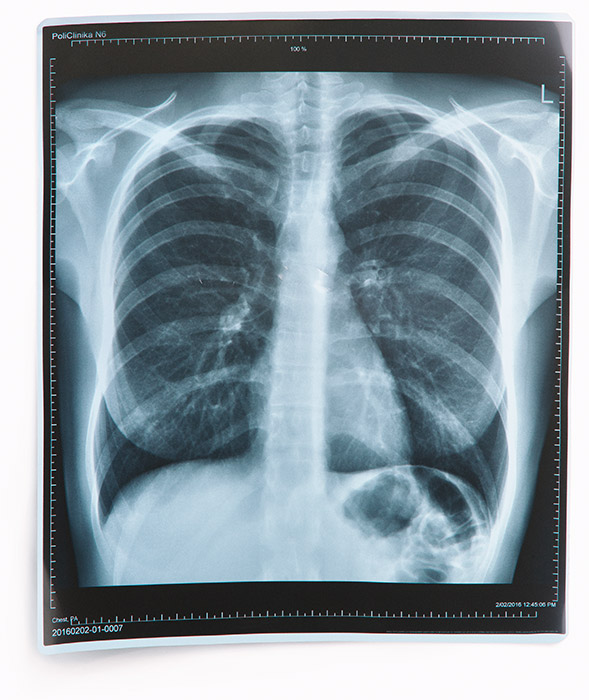

Interpretation of genetic test data from 23andMe, FamilyTreeDNA, MyHeritage, or Ancestry
Upload raw data for free. Get a detailed interpretation of your genetic information, and receive
answers to your questions.
Please note that Genotek does not control the diligence and quality of genetic tests performed
by other laboratories. By uploading the source data of other laboratory services, you agree that
Genotek is not responsible for possible errors in the source data, which may lead to incorrect
interpretation or make interpreting the data impossible.
The trademarks of 23andMe Inc., Gene by Gene Ltd, Ancestry.com LLC, MyHeritage Ltd. mentioned on
this page are indicated to inform you about companies that perform genetic tests and
consequently original genetic information. This genetic information is then further interpreted
by Genotek. However, please note, Genotek does not compare its genetic tests with these
companies, does not provide services under the given trademarks, and does not recommend
contacting a particular company.



By testing with 23andMe, FamilyTreeDNA, MyHeritage, or Ancestry, you have only discovered part of
your genetic information — a significant portion of your DNA is not interpreted. For example,
Ancestry clients do not find out which drugs are effective for particular conditions or find their
distant relatives. MyHeritage clients do not receive information about their risk of specific
diseases or facts about how the body works.
At Genotek, we know how to interpret the original genetic data from 23andme, FamilyTreeDNA, Ancestry, and MyHeritage tests
Genetic analysis is divided into several types depending on what information they help discover,
e.g., health, drug efficacy, genetic ancestry, talents, or abilities. Specific genes are selected for
each type of test, and only these are analyzed. As a result, Genotek can interpret the data of the
DNA tests and learn a lot more than the original test supposed.
There is an opportunity for you to learn information not previously known about your: ethnic
make-up, distant relatives, predisposition to various diseases and food intolerance, body's response
to different drugs, even exciting features of your body and personality.
The interpretation of gene analysis allows not only to expand this range of information but also to
evaluate it by considering the data of new studies.








Ancestry
A DNA test determines a person’s ancestry and explains which ancestors left their mark on your genome; it
is needed to better
understand yourself and your history, and learn more about ancient and modern relatives.
Ethnic composition
Most people are representatives of several ethnicities that often live far from each other. Therefore,
comparing sections of chromosomes with the DNA of typical representatives of various nationalities
allows you to discover your ethnic composition.
The DNA test tells you how much you relate to each of the 168 ethnicities.
54%
British
30%
Estonian
16%
Ashkenazi Jews
British
British
54%
Baltic peoples
Estonian
30%
Ashkenazi Jews
Ashkenazi Jews
16%
Search for relatives
With the help of DNA testing, there is a unique opportunity to determine the extent of a relationship
between two people. The primary task is to find sections of chromosomes that the two people inherited
from a common ancestor. The more sites the two people have, the fewer generations separate them from a
common ancestor.
We receive 50% of our DNA from our father and the other 50% from our mother, who got it from our
grandparents. So, our cousin’s DNA is a 12.5% match with us.
By agreeing to participate in the search for your relatives, you can find relatives up to a separation
of ten generations.
Over 90% of our clients find at least one relative.

Paternal line
Maternal line
Am I related to Napoleon, Nicholas II, and Genghis Khan?
We examine 2,600 genetic markers on the Y chromosome, only found in men and passed down from father to
son, and 830 on the mitochondrial DNA, passed down from mother to child. This comparison allows us to
track (with high accuracy) the migration path of paternal and maternal ancestors up to the exit of
modern humans from Africa.
Y-chromosome and mitochondrial DNA analysis evaluate your degree of separation (from known ancestors) of
your paternal and maternal lines.


Health
When we are young, it seems that our bodies will remain strong and healthy for an incredibly long time.
But many serious diseases may come our way sooner than we would like. Moreover, cardiovascular and
oncological diseases can manifest even at a young age.
Determining our genetic risk of diseases is an integral part of a healthy lifestyle
Genetics plays a decisive role in some diseases, while others manifest only when exposed to external
factors.
Screening for genetic diseases and assessing the likelihood of developing multifactorial diseases can
significantly help their prevention and treatment.
A comprehensive genetic test assesses the predisposition to 150 genetic and multifactorial diseases,
an individual’s response to 180 drugs, and identifies 8 primary genetic causes of conception and
pregnancy complications.
Based on this information, a doctor will develop a personal diagnostic program (blood tests or
simple, functional tests) and take precautionary measures to help prevent these diseases.
150
multifactorial
and hereditary diseases
- Male pattern baldness
- Acne
- Psoriasis
- Vitiligo
- Alopecia areata
- Diseases of the cardiovascular system
- Hypertension
- Myocardial hypertrophy
- Myocardial infarction
- Coronary artery disease
- Venous thromboembolism
- Atrial fibrillation: fibrillation and/or atrial flutter
- Abdominal aortic aneurysm
- Dilated cardiomyopathy
- Atrial fibrillation
- Brugada syndrome
- Sudden cardiac death
- Mental disorders
- Tobacco smoking
- Neuroticism
- Depression
- Bipolar disorder
- Suicidal thoughts
- Tourette syndrome
- Schizophrenia
- Alcoholism
- Anorexia nervosa
- Marijuana addiction
- Depression and alcoholism
- Creutzfeldt-Jakob disease
- Gastrointestinal Diseases
- Periodontitis
- Enamel demineralization
- Combined esophageal disease (Barrett's esophagus and esophageal adenocarcinoma)
- Barrett's esophagus
- Celiac disease
- Hypertrophic pyloric stenosis in children
- Chronic inflammatory bowel disease
- Crohn's disease
- Helicobacter pylori serological status
- Pancreatitis
- Ulcerative colitis
- Primary biliary cirrhosis
- Primary sclerosing cholangitis
- Allergic diseases
- Allergic sensitization
- Atopic dermatitis
- Atopy
- Allergic rhinitis
- Nervous system diseases
- Migraine
- Migraine with aura
- Migraine without aura
- Ischemic stroke
- Mood disorders
- Intracranial aneurysm
- Essential tremor
- Generalized epilepsy
- Attention deficit disorder
- Restless legs syndrome
- Alzheimer's disease
- Parkinson's disease
- Narcolepsy
- Multiple sclerosis
- Amyotrophic lateral sclerosis
- Myasthenia gravis
- Amyotrophic lateral sclerosis (sporadic form)
- Progressive supranuclear palsy
- Respiratory diseases
- Asthma
- Chronic obstructive pulmonary disease
- Broncho-obstructive syndrome
- Idiopathic fibrosing alveolitis
- Metabolic disorders
- Obesity
- Type 2 diabetes
- Hypothyroidism
- Hypertriglyceridemia
- Gout
- Osteoporosis
- Type 1 diabetes
- Genitourinary diseases
- Kidney stone disease
- Chronic kidney diseases
- Hypospadias
- IgA nephropathy
- Musculoskeletal diseases
- Osteoarthritis of the knee
- Osteoarthritis
- Dupuytren's contracture
- Rheumatoid arthritis
- Bechterew's disease
- Juvenile idiopathic arthritis
- Psoriatic arthritis
- Osteonecrosis of the jaw
- Kawasaki syndrome
- Behçet's disease
- Eye diseases
- Age-related macular degeneration
- Endothelial corneal dystrophy
- Glaucoma
- Myopia
- Rhegmatogenous retinal detachment
- Malignant neoplasms
- Paget's disease
- Bladder cancer
- Upper respiratory tract tumors
- Kidney cancer
- Pancreatic cancer
- Thyroid cancer
- Basalioma
- Prostate cancer
- Colorectal cancer
- Small cell lung cancer
- Lung adenocarcinoma
- Non-small cell lung cancer
- Nephroblastoma
- Testicular cancer
- Melanoma
- Glioblastoma
- Esophageal adenocarcinoma
- Germ cell testicular cancer
- Glioma
- Neuroblastoma
- Ileal carcinoid
- Osteogenic sarcoma
- Ewing's sarcoma
- Systemic connective tissue diseases
- Neonatal lupus
- Systemic lupus erythematosus
- Sarcoidosis
- Systemic scleroderma
- Blood disorders
- Childhood acute lymphoblastic leukemia
- Lymphoma
- Follicular lymphoma
- Hodgkin's lymphoma
- Chronic lymphocytic leukemia
- Myeloproliferative neoplasms
- Multiple myeloma
- Predisposition to infectious diseases
- Malaria
- Prion diseases
- Meningococcal disease
- Malformations
- Tetralogy of Fallot
- Sagittal craniosynostosis
- Cleft lip
- Orofacial fissures
- Ear diseases
- Otosclerosis

gene
AGBL1
Schizophrenia
gene
APOE
Alzheimer's disease
gene
HLA-DRB1
Multiple sclerosis
gene
BRCA1
Ovarian cancer
Nutrition
A DNA test can determine an individual’s need for vitamins and trace elements.
You can learn about individual intolerances to food such as milk, alcohol, and gluten. This
information is used as the basis for creating a balanced nutritional plan, whether a person’s goal
is weight loss, muscle gain, or a balanced diet.

Sport
An effective training program cannot be created without analyzing many factors, including genetic
ones.
Some people can quickly lose weight, while someone else can be inclined to be overweight from
childhood. Some people can comfortably perform complex exercises, while others are injured where the
probability would seem impossible.
After taking a genetic test you can start exercising at home with the help of an exercise program or
seek help from a doctor.
Physical exercise
Diet
Lifestyle
Genetic factors

gene
SLC23A1
Ligament strength and vascular elasticity
gene
ACTN3
Force of muscle contraction
gene
ACTN3
Strengthening the muscles of the left ventricle of the heart during training
Drug Efficacy
Genes influence three processes: absorption, excretion, and activity of drugs in the body.
A drug may cause side effects in some people but be safe and effective in others.
A DNA test allows you to discover the effectiveness and side effects of 150 drugs.

The security of your data is our priority
HIPAA security
Genotek’s server is configured to comply with the Health Insurance Portability and
Accountability Act (HIPAA), the federal security standards for protecting protected health
information.
Genotek does not reuse data
We will not use or sell your results without your consent.
Entirely removable
You can delete your data from Genotek’s server at any time. We fully respect and support your
data ownership.
How to download raw data
Genotek has prepared instructions for downloading the original data from your genetic test results.
Instructions for downloading original data from your genetic test «23andMe» results (pdf, 1 Mb)
662 KB
Instructions for downloading original data from your genetic test «MyHeritage» results (pdf, 1 Mb)
782 KB
Instructions for downloading original data from your genetic test «Ancestry» results (pdf, 1 Mb)
1033 KB
Instructions for downloading original data from your genetic test «FamilyTreeDNA» results (pdf, 6 Mb)
5609 KB
Personal account
This section stores personal information available only to you - no one else will see it. As
science develops every day, more and more new methods become available to Genotek, allowing us
to decipher additional sections of DNA. We add them to your account after decoding is complete
and the result is issued.
So, stay tuned! In the meantime, look at what we offer today.
Demo results

Any questions left? You may find answers below
How long does data processing take?
Data processing takes 3-4 hours.
Where will the result of data interpretation go?
You will receive the result in your account.
Where can I find the data to download?
Your initial data can be obtained from the company where you took the genetic test. Our
instructions describe how to download data from popular genetic companies.